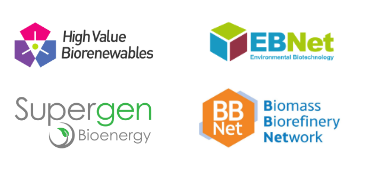POC01: Maximizing the Real Value of Lignin (MaRVeL)
- Project lead
- Tim Bugg
- Institute
- University of Warwick
Lead Applicant: Tim Bugg, University of Warwick
Co-Applicants: Jason Hallett, Imperial College London; Samuel David Jackson, University of Glasgow; Nicholas Westwood, University of St Andrews; Sharif Zein, University of Hull
Public Summary
Lignin is an aromatic polymer that occurs as 15-30% of plant biomass, and is currently a low-value by-product of cellulosic bioethanol manufacture and pulp/paper manufacture, hence there is interest in converting lignin into renewable chemicals and bio-based materials. One of the main problems in the field is that there are many different methods for generation/preparation of lignin, and each of the resulting lignins is structurally different, and behaves differently when processed via biocatalysis or chemocatalysis. The aim of this proof of concept project is to bring
together different researchers with experience of lignin preparation, characterisation, and valorisation, to prepare a set of lignins from different methods, and to process them via several different state-of-the-art methods. The results should establish whether there are particularly good (or bad) combinations of lignin preparation methods & lignin valorisation methods. This information will be extremely useful to guide the lignin valorisation community in their choice of lignin substrate. The results will also be used to guide the combination of lignin valorisation with 2nd generation biofuel production, which will add value to the lignin by-product, and help to realise the long term aim of a cellulosic biorefinery, producing fuels and chemicals from plant biomass. The project will also establish links to the UK biofuel industry (Vivergo) and bio-based plastics industry (Biome Bioplastics), and link with biorefinery research in Chile.
Public Project Outcome
Valorisation of lignin, the aromatic heteropolymer found in plant lignocellulose, is one of the major unsolved problems in developing the biorefinery concept for production of fuels and chemicals from plant biomass. One significant challenge in lignin valorisation is that there are many different methods for preparation of lignin from biomass, each of which has
different physical properties, chemical structure and reactivity.
In order to address this problem, a set of eight different lignin preparations were prepared by research groups around the UK and in Chile, using a range of lignin isolation methods. The preparations were characterised by 2-D NMR spectroscopy, revealing in detail their molecular structures. The different preparations were tested against five state-ofthe-art lignin valorisation methods: two chemical valorisation methods, and three biological methods (1 microbial fermentation, two bacterial lignin-oxidising enzymes). The results have shown quite variable products and product yields, confirming that lignin valorisation is highly dependent on the method used for lignin isolation. These results will be disseminated via a research publication, and disseminated to industrial biotechnology partners interested in lignin valorisation.








